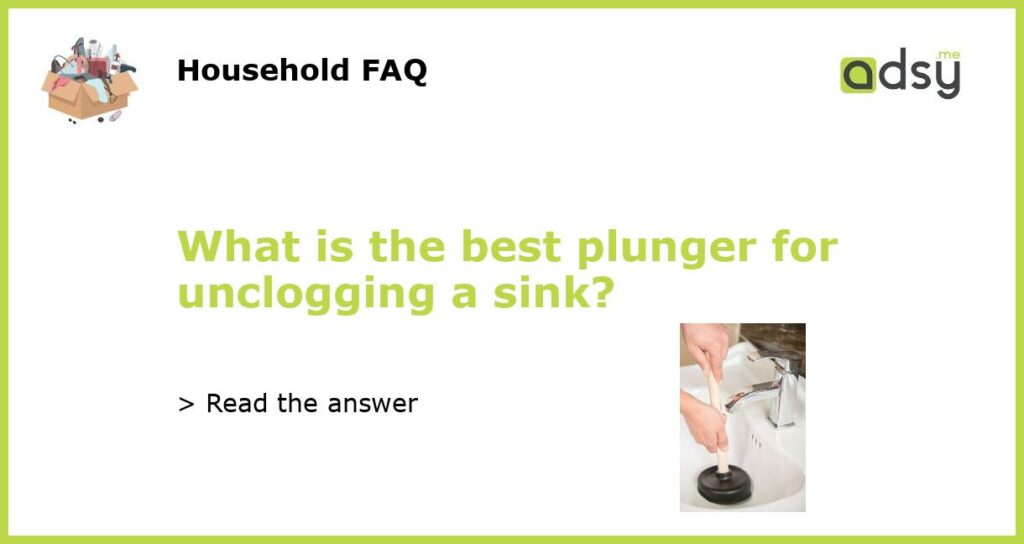The Importance of Having a Good Plunger
When faced with a clogged sink, one of the first tools that comes to mind is a plunger. However, not all plungers are created equal, and using the wrong one can make the unclogging process more challenging and less effective. In this article, we will explore the different types of plungers and determine the best plunger for unclogging a sink based on various factors such as design, functionality, and user reviews.
The Different Types of Plungers
Before we can determine the best plunger for unclogging a sink, it’s important to understand the different types of plungers available on the market. The two most common types of plungers are the cup plunger and the flange plunger.
The Cup Plunger
The cup plunger, also known as the sink plunger, is the most commonly used plunger for unclogging sinks. It features a flat rubber cup attached to a wooden or plastic handle. The cup plunger is designed to create a seal over the drain opening, allowing for maximum suction when you push and pull the plunger back and forth. This plunging action helps to dislodge the clog and allows water to flow freely down the drain.
The Flange Plunger
The flange plunger, also known as the toilet plunger, is specifically designed for unclogging toilets. It has a rubber cup similar to the cup plunger, but with an additional soft rubber flap, or flange, extending from the cup. The flange serves to create a better seal around the curved toilet bowl, providing more suction power to dislodge stubborn clogs in the toilet.
Choosing the Best Plunger for a Sink
While both the cup plunger and the flange plunger can be used to unclog a sink, the cup plunger is generally more effective due to its design and functionality. The flat rubber cup of the cup plunger creates a better seal on flat surfaces, such as sinks, compared to the flange plunger. This increased suction power makes it easier to dislodge clogs and restore proper water flow.
When choosing the best plunger for a sink, consider the following factors:
Design and Functionality
Look for a plunger with a cup design that will provide optimal suction and seal around the sink drain. A plunger with a larger cup size may be more effective for larger sinks.
Material
Choose a plunger made from high-quality, durable materials like rubber, as they are more resistant to wear and tear and will last longer.
Handle Length
Ensure that the plunger has a long handle that allows for a comfortable grip and enough leverage to apply the necessary force while plunging.
User Reviews
Read user reviews online to get an idea of the performance and effectiveness of different plungers. Look for positive feedback and testimonials from customers who have successfully unclogged sinks using a particular plunger.
In conclusion, when it comes to unclogging a sink, a cup plunger is generally the best option. Its design and functionality make it more effective at creating a seal and generating the necessary suction to dislodge clogs. When choosing a plunger, consider factors such as design, material, handle length, and user reviews to ensure you find the best plunger for your needs. Remember, having a good plunger on hand is essential for any household, as sink clogs can happen at any time and having the right tool can save you time, money, and frustration.






